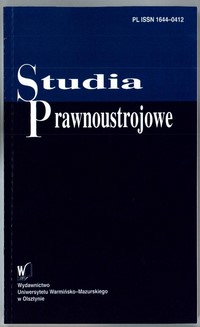Suburbanizacja oraz kontrurbanizacja jako wyzwania dla gmin
Suburbanisation and counterurbanisation as challenges facing municipalities
Author(s): Piotr RuczkowskiSubject(s): Public Administration, Environmental and Energy policy, Rural and urban sociology, Administrative Law
Published by: Wydawnictwo Uniwersytetu Warmińsko-Mazurskiego w Olsztynie
Keywords: administrative law; spatial development planning suburbanisation; counterurbanisation; planning competencies of a municipality; tasks of a municipality; a municipality;
Summary/Abstract: The aim of the study is to answer the question of whether the basic unit of local government (municipality) has any effective tools at its disposal to counteract the negative effects of suburbanisation and counterurbanisation. Nowadays, suburbanisation is understood primarily as a process of spreading cities to the neighboring suburbs (so-called “urban sprawl”). The negative effects of suburbanisation, i.e., financial, social, environmental and other costs, are borne primarily by municipalities which have to build additional infrastructure and provide adequate public services. Counterurbanisation consists in changing the purpose and function of parts of the city (especially their centers) which become sales, service, entertainment, and administrative centers, with the simultaneous outflow of permanent residents into the suburbs. It may also have negative consequences. An argument can be put forward that the negative consequences of suburbanisation and counterurbanisation may be mitigated by the proper use of the existing planning and spatial development tools or new planning instruments. Such tools and instruments may even increase the effectiveness of municipalities in spatial development planning.
Journal: Studia Prawnoustrojowe
- Issue Year: 2022
- Issue No: 57
- Page Range: 443-461
- Page Count: 20
- Language: Polish

